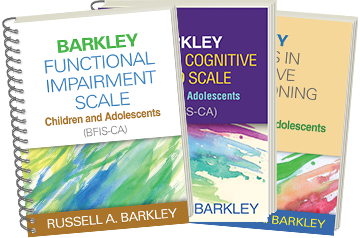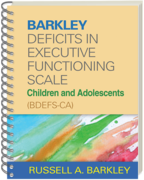Barkley Deficits in Executive Functioning Scale—Children and Adolescents (BDEFS-CA)
Russell A. Barkley

Sign up for emails on upcoming titles by Russell A. Barkley (with special discounts)!

1. Executive Functioning in Children 
2. Development of the BDEFS-CA
3. Normative Sample
4. Factor Analysis, Scale Construction, and Item Frequencies
5. Relationship of BDEFS-CA Scores to Demographic Factors in the Normative Sample
6. Reliability
7. Validity
8. Relationship of BDEFS-CA Scores to Impairment
9. Scoring and Interpretation of the BDEFS-CA Forms
Appendix: BDEFS-CA Forms, Interview, and EF Profiles
BDEFS-CA Long Form
BDEFS-CA Short Form
BDEFS-CA Interview
BDEFS-CA Long Form EF Profile (Ages 6–11, Males Only)
BDEFS-CA Long Form EF Profile (Ages 12–17, Males Only)
BDEFS-CA Long Form EF Profile (Ages 6–11, Females Only)
BDEFS-CA Long Form EF Profile (Ages 12–17, Females Only)
BDEFS-CA Short Form EF Profile (All Ages and Both Sexes)



